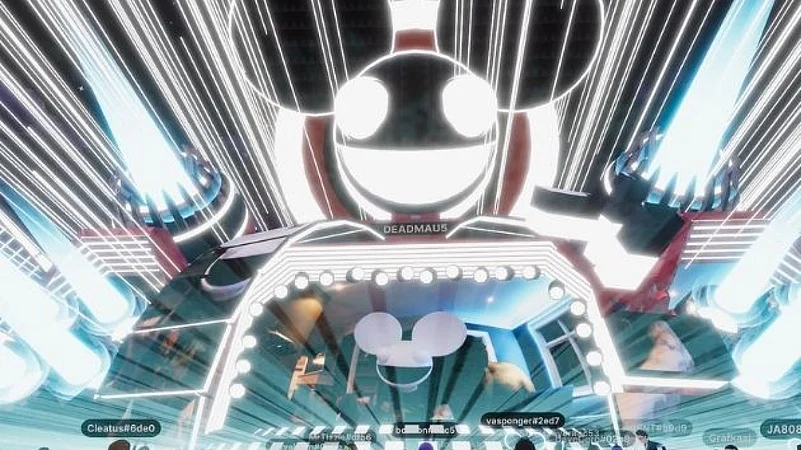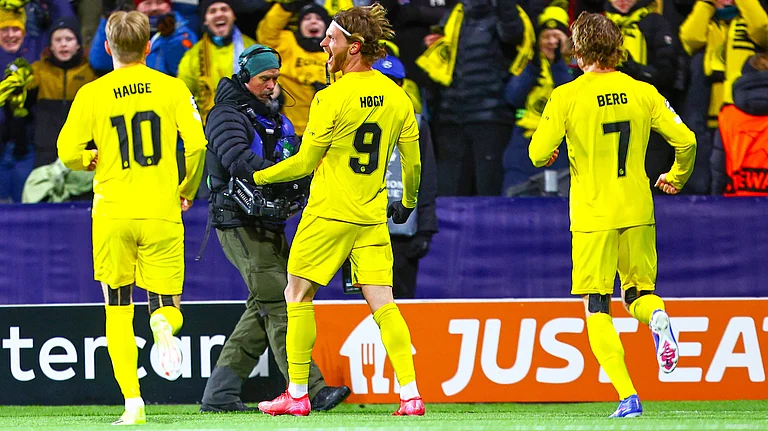Dinesh SP and Janganandhini tied the knot on February 6. He wore the traditional veshti with a white shirt, and she was draped in a white saree. Over 6,000 people joined them on their big day. It was their dream wedding — a wedding in the Harry Potter-themed metaverse.
Metaverse, which has emerged as the new buzzword in the digital world today, became part of the popular discourse in October last year after Facebook CEO Mark Zuckerberg announced the rebranding of his company as Meta.
The idea behind Metaverse is to create a space where the physical and the virtual worlds come together to create an imagined world online — inspired, almost to the T, by the real world that humans inhabit.
What is Metaverse?
While there are many definitions of the phenomenon that are doing the rounds on the internet, Metaverse can be defined as an alternate reality — an immersive 3D environment that replicates the physical world and its experiences on the screen. From visiting a mall to attending a concert, and going to a bank to eating at a restaurant, every activity of daily life is believed to be possible in the Metaverse. Except that it is not you who physically become part of this universe but the digital avatar that you can customise and create.
Companies across sectors have already started purchasing spaces in Metaverse to explore the possibilities of their services in the virtual world. Bollywood production house Pooja Entertainment recently announced that it had bought virtual land in Metaverse that will bring out Akshay Kumar and Tiger Shroff-starrer ‘Bade Miyan Chote Miyan’ in 2023. Restauranteur Zorawar Kalra, too, announced earlier this week that his ‘Farzi Café’ will now exist in Metaverse.
Amber Sinha, Executive Director at Centre for Internet & Society, says that Metaverse is, in a way, an upgrade on the current version of the internet. Talking about the evolution of the internet, he explains that internet 1.0 was essentially a space where users were consumers of information. The 2.0 version was a more social, open architecture of sorts that saw the arrival of user-generated content, making the internet a two-way space between content consumers and generators. “Metaverse is internet 3.0. It is touted to be the logical development of the internet at this point in time,” he says.
Metaverse can be broken down into three components — virtual reality, creators economy, and decentralised ownership. Simply put, it is a virtual recreation of the physical world which will have an economy defined by the creator of the Metaverse, which would be a “publicly-owned” space accessible to everybody. So, when you go to a mall in the Metaverse, you can buy virtual goods using the Metaverse currency, which is, in most cases, NFTs or non-fungible tokens. To paint a picture, when your avatar enters the mall in Metaverse to purchase a virtual pair of shoes, you mint an NFT that can be bartered for the pair of shoes.
In some cases, minting an NFT might require you to spend “real” currency, but several platforms also offer you other ways of owning an NFT, like by solving a puzzle or successfully finishing a treasure hunt, in a process quite similar to getting a power-up in a game.
The phenomenon of Metaverse, however, is not new. “It has been around for ages,” says Rajat Ojha, founder of Party Nite, a Metaverse that hosted a virtual Daler Mehndi concert on Republic Day. It has been in existence in another form for quite some time in online games where a similar three-dimensional immersive and fantastical world is created that is inhabited by the gamers’ digital avatars.
Sinha says that the difference is that the notion of Metaverse is becoming popular in contemporary discourse, unlike the gaming universe. “You can pause the game, but Metaverse is persistent. It will continue to exist even after you leave it. Metaverse is live and synchronous,” he says.

What’s The Point?
According to Ojha, the development of Metaverse is the outcome of “people’s digital fascination” and an imperative need to connect with other human beings, a need, one might argue, was being addressed by social networking sites like Facebook, Instagram or Twitter. “In Metaverse, there is an individual’s physical presence. It (avatar) is a walking-talking person,” he justifies. The fact that users can create their own avatars, making them look either exactly how they look, or an aspirational image of theirs is another factor.
“There is a strong sense of personalisation,” says Ashish Bhatnagar of now.gg, a platform that has developed technology to transform existing mobile games into Metaverse. “Even if your real-life sucks, you can be a hero in Metaverse. There is an element of vanity attached to it,” Ojha says.
Metaverse also has room for unlimited participation. “In the physical world, there is a limitation on the number of people that can attend an event. Online unlocks that restriction,” says Bhatnagar. The Daler Mehndi concert, for instance, saw 20 million people joining in. A physical music concert would have room for only a restricted number of people. Others would have to make do with a livestream of the event on YouTube. “In Metaverse, you are not watching the event, you are part of it,” Ojha says.
It was because of the possibilities metaverse offers that 6,000 people managed to attend Dinesh and Janganandhini’s wedding at a time when the cap on the number of wedding guests in the physical world was only 100. The couple also reportedly created an avatar of the groom’s father who passed away in 2020 to ensure his presence on their wedding day.
Physical-Digital Juxtaposition
To justify the existence of this parallel reality, many Metaverse platforms are offering virtual experiences that come with physical incentives that are tangible in the real world. The Farzi Café; in Metaverse would allow foodies to enjoy the gastronomical experiences virtually and physically.
The virtual Farzi Café is being created by OneRare, a food Metaverse or a “foodverse” that will recreate the interiors of the restaurant digitally. To begin with, guests can mint tokens for recipes and ingredients by playing games, which can further be exchanged at the physical restaurant for actual food items. Kalra said the virtual 'Farzi Cafe is likely to open up for experience in “a couple of months”.
“Farzi Cafe has always been very avant-garde, and part of it is also embracing technology. With Metaverse, we want to juxtapose the online world and the offline world. So, what you do in the online world will have real-life experiences in the offline world,” Kalra says.
Was it induced by Covid?
The timing of the growing popularity of the Metaverse phenomenon makes one wonder if the buzz is induced by the Covid-19 pandemic that confined people within the four walls of their homes, making them crave human connection more than ever. Sinha says it “wasn’t induced, but accelerated” by the pandemic.
The popularity of Metaverse that allows people to socialise online without stepping out of their homes, also raises concerns over this alternate reality, encouraging a culture of “physical isolation”. But Ojha is not worried. He explains that Metaverse allows users to interact with people from all over the world, and the digital interactions would eventually translate into physical meetings in the real world. “The digital world has always brought people closer,” he says. “If you meet a person from Mumbai in the metaverse and you like them, you will end up wanting to meet them when you are in Mumbai next.”

The Future
The way the digital world has grown, Sinha says, it was designed to create more interaction, but a lot is yet to be figured out. Because Metaverse involves an intersection of multiple components, like virtual and augmented realities, virtual currency and NFTs, the desired “interoperability is quite unprecedented”. “For the sort of vision of Metaverse that we are talking about to become a reality, these pieces need to come together,” he says.
While agreeing that it was too early to tell what all was possible in Metaverse, Kalra, a techno-geek himself, is optimistic. “A virtual presence on Metaverse is definitely going to be a thing, an absolute norm 10 years down the line, maybe even sooner. Will it replace physical things? I don’t think so, but it will be an augmented,” he says.


























